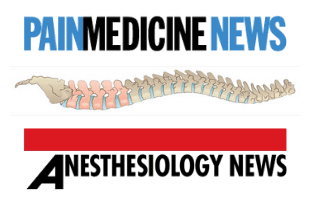Article: “Long-Term Morbidity of Accidental Dural Puncture Underappreciated”

A new article, originally published in Anesthesiology News, features three clinicians discussing accidental dural punctures and how some patients don’t improve, even with epidural blood patching.
From the article, “Long-Term Morbidity of Accidental Dural Puncture Underappreciated,” which focuses on the obstetric population:
Anesthesiologists have recognized for decades the severity of acute postdural puncture headache (PDPH), but the long-term—and sometimes devastating—effects of accidental dural punctures are only beginning to be known.… [D]espite the overwhelming safety and efficacy of epidural analgesia, unintentional dural puncture is its most common complication, occurring in 0.4% to 6% of [women in labor]. While most clinicians are aware of the severe acute positional headaches that develop in as many as 80% of these affected women, the long-term sequelae of unintentional dural puncture are much less understood. …
Gopinath Niraj, MD, and colleagues recently published one of the largest prospective multicenter studies evaluating long-term outcomes of accidental dural puncture with a 16-gauge epidural needle (Anaesthesia 2021;76[8]:1068-1076). In the trial, 90 accidental dural puncture patients were matched 1:2 with controls who had an uneventful epidural insertion. The study found that the incidence of persistent headache at 18 months was significantly greater in the accidental dural puncture group (58% vs. 17%; P<0.001).” … As Niraj explained, the deleterious long-term effects of accidental puncture are compounded by the fact that most clinicians fail to acknowledge them. “Because of what the word ‘headache’ means to most people, it is not given enough importance.”
Another physician, Dr. Alan Kaye, is quoted as saying, “When I was in anesthesia residency training, I was taught that an epidural blood patch for accidental dural puncture in the obstetric population was curative in the vast majority of patients. Recent studies really cast doubt that is true.”
And Dr. Niraj concludes: “Accepting that there is a problem is the first step. The International Headache Society defines postdural puncture headache as a postural headache that lasts for two weeks and is self-limiting. That wording gives rise to a general lack of awareness. This definition needs to reflect the long-term morbidity that can follow an accidental dural puncture, which recent studies have revealed. It is so much more than a self-limiting entity.”
